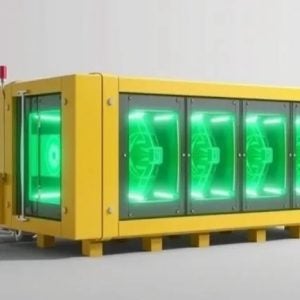 An 80-page report by the US Fusion Energy Sciences Advisory Committee (FESAC), “Powering the Future: Fusion and Plasmas” published in December says the US should build a fusion pilot plant (FPP) by the 2040s.
An 80-page report by the US Fusion Energy Sciences Advisory Committee (FESAC), “Powering the Future: Fusion and Plasmas” published in December says the US should build a fusion pilot plant (FPP) by the 2040s.
The report will be submitted to the Department of Energy’s Fusion Energy Sciences office, which will consider its recommendations.
The committee said in the preface to the report that the recommendations were reached by “consensus” following discussion. “Ultimately, we speak with one voice in conveying a vision for a vibrant programme that will bring significant benefit to society.”
The report said the time has come “to move aggressively toward the deployment of fusion energy” and that scientific and technological innovations “point the way toward a unique US vision for economically attractive fusion energy, setting the stage to build a fusion pilot plant by the 2040s”.
It noted that “the foundation of a US fusion energy industry is central to this vision and this industry has already taken root, with approximately $2 billion of private capital invested to date”. It added: “Partnerships will accelerate progress. Partnership in the international ITER fusion project is essential for US fusion energy development, as is supporting the continued growth of the private sector fusion energy industry.”
The report came up with a set of key recommendations, which is said “are targeted toward realising the overall mission of establishing the technical basis for an FPP in the 2040s.”. The underlying theme guiding the overall strategic plan “is the need to move urgently and aggressively toward the deployment of fusion energy”. The recommendations are:
- Initiate a design effort that engages all stakeholders and establishes the technical basis for closing critical gaps for a FPP.
- Pivot the research and development focus toward fusion materials and technology.
- Immediately establish the mission need for a Fusion Prototypical Neutron Source (FPNS) facility to support development of new materials suitable for use in the fusion nuclear environment, and pursue design and construction as soon as possible.
- Develop the scientific infrastructure necessary for the study of plasma-materials interactions needed to create plasma facing components for a fusion pilot plant by completing the Material Plasma Exposure Experiment (MPEX) and high-heat flux testing facilities.
- Significantly expand blanket and tritium research and development programmes.
- Close fusion pilot plant design gaps by utilizing research operation of the DIII-D National Fusion Facility in Princeton and the National Spherical Torus Experiment Upgrade (NSTX-U) in San Diego, and collaborating with other world-leading facilities.
- Ensure full engagement of the US fusion community in ITER by forming an ITER research team that capitalises on US investment to access a high gain burning plasma.
- Immediately establish the mission need for an EXCITE (EXhaust and Confinement Integration Tokamak Experiment) facility to close the integrated tokamak and exhaust gap and pursue design and construction as soon as possible.
- Strengthen the innovative and transformative research programme elements that offer promising future opportunities for fusion energy commercialisation: stellarators, liquid metal plasma facing components, inertial fusion energy and alternate concepts.
- Consistently support fundamental plasma science to ensure a steady stream of innovative ideas and talent; laying the scientific foundation upon which the next generation of plasma-based technologies can be built.
- Complete the design and construction of the Matter in Extreme Conditions instrument Upgrade (MEC-U).
- Establish a plasma-based technology research programme focused on translating fundamental scientific findings into societally beneficial applications.
- Coordinate a High Intensity Laser Research Initiative in collaboration with relevant DOE offices and other federal agencies.
- Pursue the development of a multi-petawatt laser facility and a high-repetition-rate high-intensity laser facility in the US.
- Support networks to coordinate research and broaden access to state-of-the-art facilities, diagnostics, and computational tools.
- Strengthen support of laboratory-based research relevant to astrophysical and space plasmas through increased programmatic and facility funding as well as expansion of partnership opportunities.
FESAC provides independent advice to the Director of the DOE’s Office of Science on complex scientific and technological issues that arise in the planning, implementation, and management of the fusion energy sciences programme.
Photo: Wayne Solomon, deputy director of magnetic fusion energy and director of science and technology at General Atomics, was a lead on the FESAC subcommittee that produced the report (Credit: GA)






